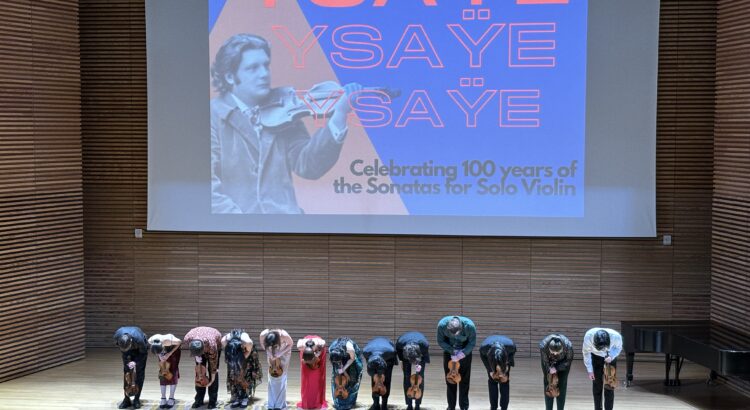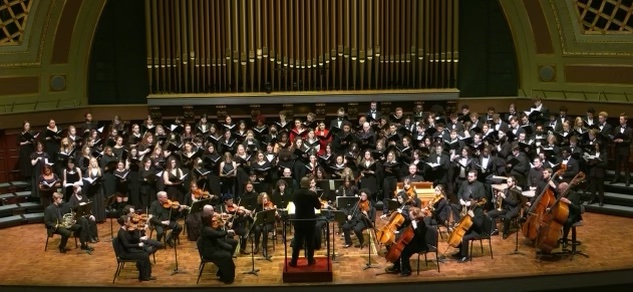To celebrate the 100th Anniversary of Ysaÿe’s Six Sonatas for the violin, 13 students studying under Professors Danielle Belen, Aaron Berofsky, David Halen, and Fabiola Kim gave an outstanding performance of the complete set on Monday, November 20th in the Stamps Auditorium on North Campus.
The violin is most commonly seen in an orchestra or accompanied by a pianist. Ysaÿe’s sonatas, however, only showcase the violin. His work highlights the raw beauty and power a talented musician can bring out of such a small instrument. The music made full use of what the violin has to offer through double stops, chords, harmonics, and more, all techniques difficult to master because the slightest tilt of the bow or millimeter difference between the fingers can taint the sound. When Professor Belen and Professor Kim opened the event, they said this was a rare performance only made possible because of the talent that SMTD has.
It was my first time listening to Ysaÿe’s sonatas except for a brief video clip I saw of Maxim Vengerov playing a passage in Sonata No. 3 in D minor, “Ballade,” op.27. It’s a gorgeous movement that has a consistent melodic theme with different variations, but unlike Vengerov’s fierce interpretation, the student soloist Yuchen Cao had a much more gentle and relaxed approach, almost as if he were stroking the strings with his bow.
Sonata No. 2 in A minor, op. 27 had a few elements that pleasantly surprised me. In the II movement, Malinconia, the soloist uses a mute, a tool that string players put on the bridge of their instrument to create a fuzzier sound. Similarly, the III movement, Danse des Ombres, began with pizzicato, a technique where the player strums the strings with their fingers. Both were fun and interesting additions that contrasted the heavier or brighter music that violinists tend to emphasize in solo works.
The last act performed by Tianyu Lin simply blew me away. His technique, the vibrato, the intonation, and the tone, were perfect, making his double stops and chords beautifully ring and synchronize. The precision he had when scaling the fingerboard from its lowest to the highest range was flawless. I honestly feel like I was more enamored by his skill and talent than the music.
Symphonies and concertos are all lovely, but it was a nice change of pace to listen to a collection of Sonatas live. I’ve always been aware that the music department at UofM is top-tier, but this event let the individuals who make up the department shine.







